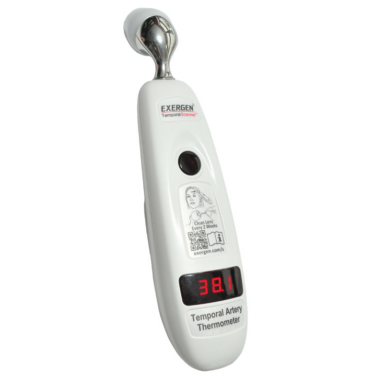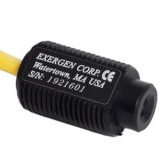Common Questions & Answers
A: No. The Temporal Artery Scanner must make contact with the skin and the probe head must be flush to the surface of the skin at all times during the scan across the forehead, and also behind the ear if using the device behind the ear.
A: The temporal artery area has a long history of temperature measurement, dating back to the early centuries before Christ with the first recorded references to palpation of the head for fever assessment. The temporal artery is a branch of the internal carotid artery, but courses within a millimeter or two of the skin’s surface over the lateral forehead. It is readily accessible and, despite lying so close to the skin surface, presents no risk of injury from being touched. Since it is not an anastomosing vessel, the perfusion remains relatively constant, ensuring the stability of blood flow required for the AHB method.
A: Measuring the temperature behind the ear eliminates the possibility of false low temperature readings caused by the evaporative cooling effect of diaphoresis at the temporal artery. Vasodilation, which always precedes diaphoresis, also provides the area behind the ear with the high rate of perfusion required for accurate measurement. However, when vasodilation is not present, the perfusion rate behind the ear is too low and variable to give an accurate measurement. Other alternate areas when the head is inaccessible due to trauma or dressings include the neck and inguen.
A: Patented infrared technology has led to the development of small, durable, infrared scanners that calibrate the arterial heat balance (AHB). One sensor measures the arterial temperature on the patient’s skin, capturing the peak reading, while another sensor measures ambient. Since ambient temperature has a direct effect on skin temperature, the thermometer automatically measures both many times per second — and uses a patented algorithm to automatically adjust the correct AHB equation.





